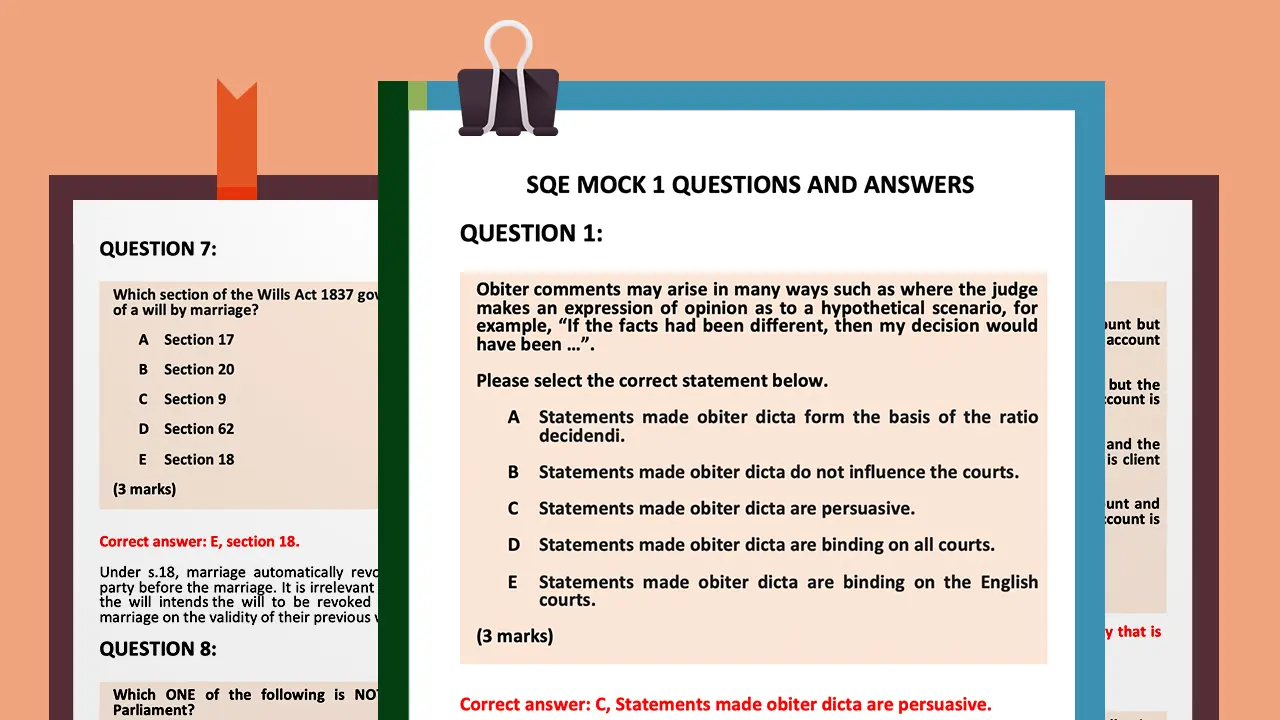Learn & Revise
Beta Version
SQE Practice Questions
360 SQE1 Practice Questions FOR THE SQE1 EXAM
Get ready for the SQE with our 360 online SQE practice questions. Designed for clarity and effectiveness, they cover key topics to enhance your SQE1 exam readiness. These user-friendly questions offer a practical way to test your knowledge and boost your confidence for the Solicitors Qualifying Examination. Please kindly note, that due to unprecedented demand this has been made available as a beta version.
Instant Access




